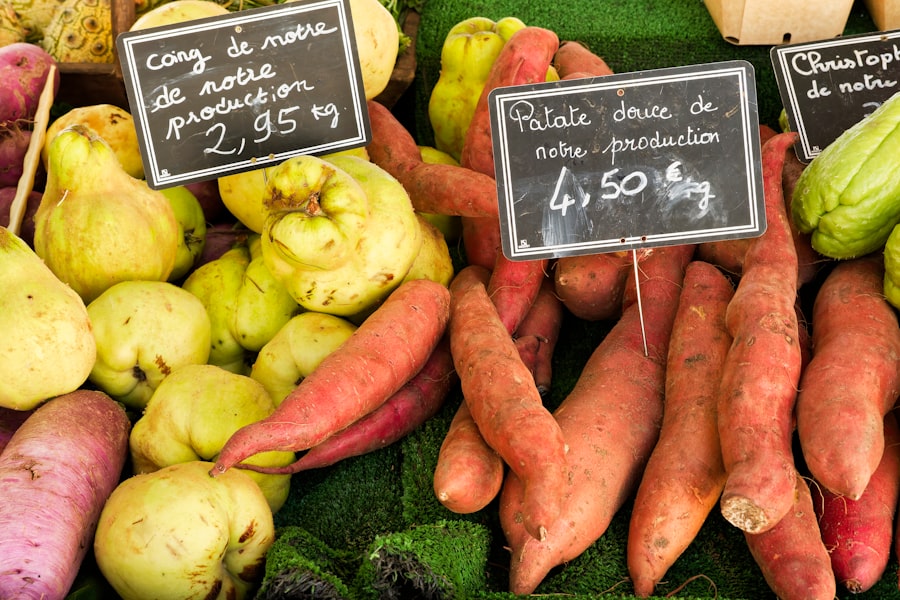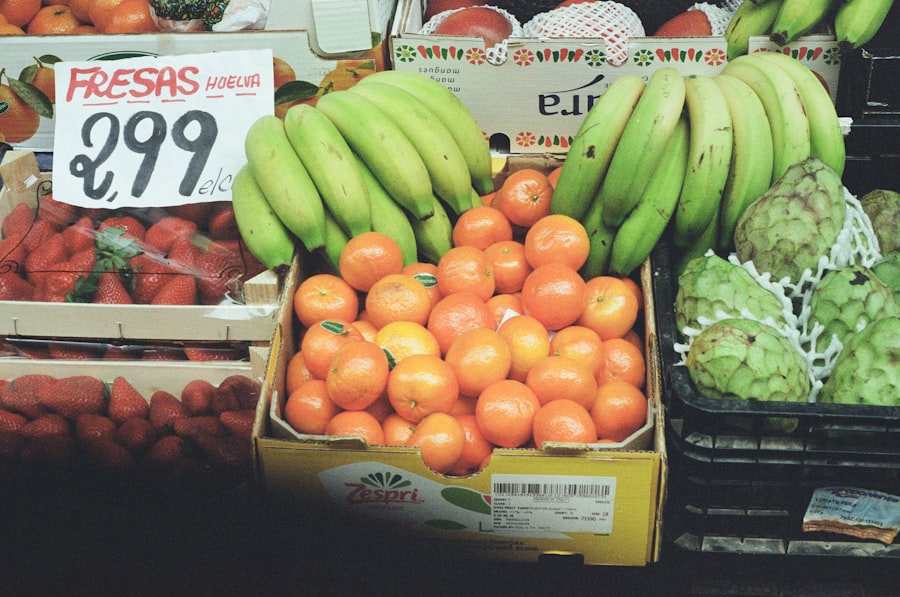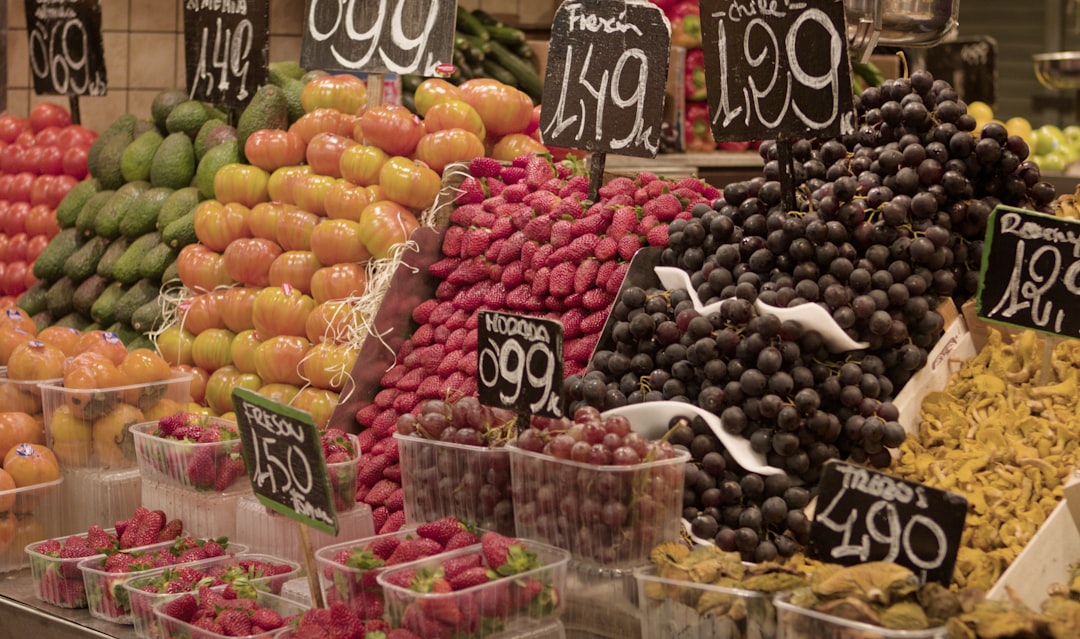In-season produce refers to fruits and vegetables that are harvested during their natural growing season, which varies depending on the climate and geographical location. This concept is not merely a trend but a time-honored practice that connects consumers to the rhythms of nature. When produce is in season, it is typically at its peak in terms of flavor, nutrition, and availability.
The vibrant colors and rich tastes of seasonal fruits and vegetables can transform any meal into a culinary delight, making it an appealing choice for home cooks and professional chefs alike. The significance of in-season produce extends beyond mere taste; it encompasses a broader understanding of food systems and sustainability. By choosing to consume what is currently being harvested, individuals can support local agriculture, reduce their carbon footprint, and enjoy fresher, more nutritious options.
As awareness grows about the benefits of eating in-season, more people are beginning to appreciate the connection between their food choices and the health of the planet.
Key Takeaways
- In-season produce is fresher, more nutritious, and often more affordable than out-of-season options.
- Buying in-season supports local farmers and reduces environmental impact by minimizing transportation and storage needs.
- Proper buying and storage tips help maximize the shelf life and quality of in-season fruits and vegetables.
- Incorporating in-season produce into meal planning can enhance diet variety and reduce food waste.
- Embracing in-season produce benefits personal health, the economy, and the environment simultaneously.
Understanding the Cost Benefits
One of the most compelling reasons to embrace in-season produce is the cost savings it can offer. When fruits and vegetables are in season, they are often more abundant, leading to lower prices at local markets and grocery stores. This abundance can translate into significant savings for consumers who are mindful of their grocery budgets.
Additionally, purchasing in-season produce can reduce transportation costs, as these items do not need to be shipped from distant locations, further driving down prices. Moreover, buying in-season produce often means that consumers can take advantage of sales and discounts offered by local farmers’ markets or grocery stores eager to sell their fresh stock. This not only allows individuals to save money but also encourages them to experiment with new recipes and ingredients that they might not have considered otherwise.
By understanding the cost benefits associated with in-season produce, consumers can make informed choices that align with both their financial goals and their culinary aspirations.
Health Benefits of In-Season Produce

The health benefits of consuming in-season produce are numerous and well-documented. Fruits and vegetables that are harvested at their peak ripeness tend to be richer in vitamins, minerals, and antioxidants compared to those that are picked early and transported long distances. This means that when individuals choose in-season options, they are likely to receive a higher nutritional value from their meals.
For instance, tomatoes picked at the height of summer are bursting with flavor and nutrients, while those shipped from faraway places may lack both. In addition to enhanced nutritional content, in-season produce is often free from preservatives and artificial ripening agents that are commonly used for out-of-season fruits and vegetables. This means that consumers can enjoy a more wholesome eating experience without the added chemicals that can accompany off-season produce.
By prioritizing in-season options, individuals can nourish their bodies with fresh, vibrant foods that contribute to overall health and well-being.
Environmental Impact of In-Season Produce
| Produce | Season | Water Usage (liters/kg) | Carbon Footprint (kg CO₂/kg) | Land Use (m²/kg) | Benefits of In-Season Consumption |
|---|---|---|---|---|---|
| Tomatoes | Summer | 180 | 1.1 | 0.5 | Lower energy for heating and lighting, reduced transportation emissions |
| Strawberries | Spring | 150 | 1.3 | 0.4 | Less reliance on heated greenhouses, fresher produce with less spoilage |
| Apples | Fall | 700 | 0.9 | 1.2 | Reduced storage time and energy, supports local farming |
| Spinach | Spring | 200 | 0.8 | 0.3 | Lower pesticide use, minimal transportation emissions |
| Carrots | Fall | 150 | 0.7 | 0.4 | Less fertilizer needed, supports soil health |
The environmental impact of choosing in-season produce cannot be overstated. When consumers opt for fruits and vegetables that are grown locally and harvested during their natural seasons, they significantly reduce the carbon footprint associated with food transportation. Out-of-season produce often travels thousands of miles before reaching consumers’ plates, contributing to greenhouse gas emissions and environmental degradation.
Furthermore, in-season produce typically requires fewer resources for cultivation compared to out-of-season varieties that may need artificial heating or extensive irrigation systems. This means that by consuming what is naturally available, individuals are supporting farming practices that are more aligned with ecological balance.
The choice to eat in-season not only benefits personal health but also fosters a healthier planet for future generations.
Tips for Buying and Storing In-Season Produce
When it comes to buying in-season produce, there are several strategies that can help consumers make the most of their purchases. First and foremost, visiting local farmers’ markets is an excellent way to find fresh, seasonal options while supporting local agriculture. Farmers’ markets often feature a wide variety of fruits and vegetables that are at their peak, allowing consumers to explore new flavors and ingredients.
In addition to shopping at farmers’ markets, individuals should consider joining a community-supported agriculture (CSA) program. These programs allow consumers to purchase shares of a farm’s harvest, providing them with a regular supply of fresh produce throughout the growing season. This not only ensures access to in-season items but also fosters a deeper connection between consumers and the food they eat.
Once purchased, proper storage techniques can help extend the life of in-season produce. For example, leafy greens should be washed and stored in a breathable container lined with paper towels to absorb excess moisture. Root vegetables like carrots and potatoes should be kept in a cool, dark place to maintain freshness.
By employing these storage tips, individuals can minimize waste and enjoy their seasonal bounty for longer periods.
Recipes and Meal Planning with In-Season Produce

Incorporating in-season produce into meal planning can be both enjoyable and rewarding. Seasonal ingredients lend themselves well to a variety of dishes, allowing home cooks to create vibrant meals that celebrate the flavors of each season. For instance, summer might inspire fresh salads featuring ripe tomatoes, cucumbers, and basil, while fall could call for hearty soups made with squash, carrots, and potatoes.
To make meal planning easier, individuals can create a seasonal calendar that outlines which fruits and vegetables are available throughout the year. This not only helps with grocery shopping but also encourages creativity in the kitchen as cooks experiment with new recipes based on what is currently in season. Additionally, many online resources provide seasonal recipe ideas that highlight the best ingredients available at any given time.
Supporting Local Farmers and Communities
Choosing in-season produce is not just about personal health; it also has far-reaching implications for local economies and communities. By purchasing fruits and vegetables from local farmers, consumers contribute directly to the livelihoods of those who grow their food. This support helps sustain small farms and encourages agricultural diversity within communities.
Moreover, buying locally fosters a sense of community connection as individuals engage with farmers and learn more about where their food comes from. Many farmers’ markets offer opportunities for education through workshops or demonstrations on sustainable farming practices or cooking techniques. This engagement not only enriches consumers’ understanding of food systems but also strengthens community ties as people come together around shared values of sustainability and health.
When comparing in-season produce to its out-of-season counterparts, several key differences emerge that highlight the advantages of choosing seasonal options. In terms of flavor, in-season fruits and vegetables are often far superior; they are allowed to ripen naturally on the vine or tree, resulting in richer tastes and textures. Conversely, out-of-season produce may be harvested prematurely to withstand long transport times, leading to bland flavors.
Nutritionally speaking, in-season produce tends to be more beneficial for health due to its higher vitamin content and lack of preservatives. Out-of-season options may require chemical treatments to maintain freshness during transport, which can detract from their overall nutritional value. Additionally, the environmental impact associated with out-of-season produce is significant; the energy required for transportation contributes to greenhouse gas emissions that harm the planet.
Ways to Incorporate In-Season Produce into Your Budget
Incorporating in-season produce into a budget-friendly meal plan is entirely feasible with some strategic planning. One effective approach is to create a weekly menu based on what is currently available at local markets or grocery stores. By focusing on seasonal ingredients, individuals can take advantage of lower prices while enjoying fresher options.
Another way to stay within budget while enjoying in-season produce is by purchasing items in bulk when they are at their peak availability. For example, buying large quantities of berries during summer can allow for freezing or preserving them for later use throughout the year. This not only maximizes savings but also ensures access to delicious seasonal flavors long after the harvest has ended.
In-Season Produce and Food Waste Reduction
Food waste is a significant issue facing modern society, but choosing in-season produce can play a crucial role in mitigating this problem. When individuals purchase fruits and vegetables that are currently being harvested, they are more likely to consume them before they spoil due to their freshness and shorter shelf life compared to out-of-season options. Additionally, by planning meals around seasonal ingredients, individuals can reduce the likelihood of purchasing items that may go unused or forgotten at the back of the refrigerator.
Creative cooking techniques such as pickling or fermenting can also help preserve excess seasonal produce for later enjoyment while minimizing waste.
Embracing the Benefits of In-Season Produce
Embracing in-season produce offers a multitude of benefits that extend beyond mere taste preferences; it encompasses economic savings, health advantages, environmental sustainability, community support, and waste reduction. As individuals become more aware of these advantages, they are empowered to make informed choices about their food consumption. By prioritizing seasonal ingredients in their diets, consumers not only enhance their culinary experiences but also contribute positively to their communities and the environment.
The journey toward embracing in-season produce is one that fosters a deeper connection between people and their food while promoting a healthier planet for generations to come.
Food prices can vary significantly depending on the season, with in-season produce often being more affordable due to factors such as increased supply and lower transportation costs. For a deeper understanding of this phenomenon, you can read more in the article on seasonal food pricing at Hey Did You Know This.
WATCH THIS! The 100-Year Lie That Built Your Grocery Store — The Hidden Truth About “Fresh” Produce
FAQs
Why is food generally cheaper when it is in season?
Food is cheaper in season because it is more abundant and easier to grow during its natural growing period. This abundance reduces production costs and supply chain expenses, leading to lower prices for consumers.
How does supply and demand affect the price of seasonal food?
When a food item is in season, supply increases significantly while demand remains steady or increases slightly. This surplus supply typically lowers prices. Conversely, out-of-season foods are scarcer, which drives prices up due to limited availability.
Does transportation cost influence the price of seasonal food?
Yes, transportation costs are lower for seasonal foods because they are often grown locally or regionally, reducing the need for long-distance shipping. Out-of-season foods may need to be imported from distant locations, increasing transportation expenses and the final price.
Are seasonal foods fresher than out-of-season foods?
Generally, yes. Seasonal foods are harvested at their peak ripeness and consumed shortly after, which often results in fresher produce. Out-of-season foods may be harvested early and stored or shipped long distances, potentially reducing freshness.
Do seasonal foods have better nutritional value?
Seasonal foods can have better nutritional value because they are harvested at their peak maturity, which often means higher levels of vitamins and minerals compared to out-of-season produce that may be picked early and stored for extended periods.
How does farming method impact the cost of seasonal food?
Seasonal foods typically require fewer artificial inputs like heating, lighting, or greenhouses, which reduces farming costs. Out-of-season production often involves more intensive methods, increasing costs that are passed on to consumers.
Can buying seasonal food support local farmers?
Yes, purchasing seasonal food often supports local farmers and economies because these foods are usually grown nearby. This support helps sustain local agriculture and reduces environmental impacts associated with long-distance transportation.
Is it better to buy seasonal food for environmental reasons?
Buying seasonal food is generally better for the environment because it reduces the need for energy-intensive growing methods and long-distance transportation, lowering carbon emissions and resource use.
